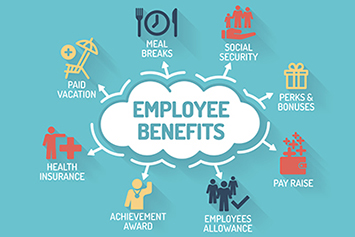Benefit optimization, as the name implies, is the process used by HR professionals to critically assess the organization’s benefit structure and determine what changes can be made to make the benefit package on offer best serve the organization and the employees.

|
This process helps both employers and employees. Employers benefit from being able to focus benefit expenditures on the programs that employees truly value—thus allowing the employers to get the most impact from their benefit program in terms of employee recruiting and retention. It helps employees because it means the employer has taken the time to assess which benefits will truly be most appreciated by employees —and ideally the employer will then focus on providing those things.
That said, to optimize the entire benefit structure may take a lot of time and effort. It’s certainly not a small task for most organizations. But the benefit (no pun intended) is likely worth the cost. It can allow the organization to stop wasting money on programs that employees don’t value, and then use the money saved to either boost profits or to offer new benefits that will better serve as recruitment and retention tools.
How to Begin Optimizing Benefits
- Create a communication plan for the entire process. While this process should be a net positive when it is completed, there are some pitfalls to avoid and some potential problems to navigate. For example, during this process you will be asking for employee input—but not all employees are going to get what they ask for. And some employees may lose a benefit they value. These are potentially frustrating issues, and the way this process is communicated will make an incredible difference in employee perception.
- Get employee input. The whole exercise is dependent upon having a clear understanding of what benefits employees truly value, without making assumptions. Note: Be careful of assuming that a low utilization rate means a benefit is not valued; it could simply mean that employees are unaware of the benefit or that there is something that can be changed about it to make it more useful. It’s best to get input directly from employees on what they would like to see.
- Consider whether it makes sense to offer some benefits on an a la carte basis, allowing employees to pick and choose between benefits with a maximum total benefit level. This may allow employees to craft options that are best suited while still cutting costs. (Be careful when crafting any plan that ends up with different employees with different benefits; be sure to take steps to ensure there is not an opportunity for discrimination in the process.)
- Get competitor data. Review any information you can gather about the benefits provided by other organizations who you’re competing with for talent. This is the same idea as benchmarking salary levels and just as important.
- Also use this opportunity to optimize the benefit itself. For example, are you getting the best deal on the insurance coverage you’re providing? Are there ways you can improve efficiency in the implementation of a benefit without cutting the advantages it offers to employees? Are there ways that costs can be shared by employees without significantly diminishing the overall benefit? Are there options for using the same providers for more than one benefit to get cost savings, such as using the same insurance provider for more than one type of insurance plan?
- Assess whether your benefit program is actually driving the behaviors you desire. For example, if you have a wellness program, is it being utilized by employees? Is it having the result of reduced absences (for example)? If there are programs that have an attached assumption in terms of employee behavior, check to see if the program is still generating that result, and if not, see what changes are needed. Conversely, if your benefits are not driving employee behaviors, are there benefits you could add that would have a more direct impact on employee performance and on the bottom line? (Desired behaviors might include improved retention or reduced absences, for example).
Have you completed a formal benefit optimization? What benefits did you find were valued but not offered or vice versa?
